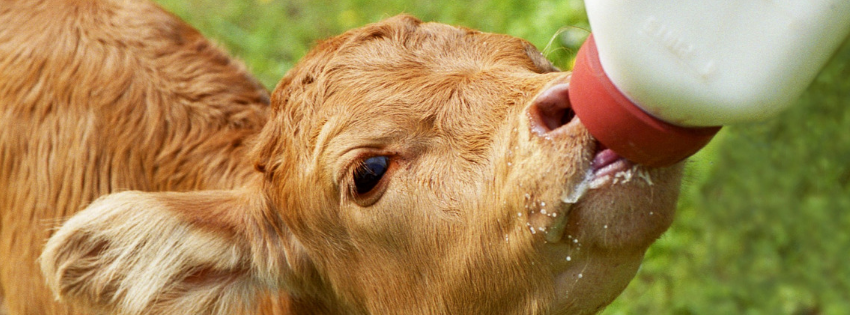Recently at the Dairy Research Foundation’s 2018 Symposium. Dr James called for farmers to completely rethink their approach to feeding calves.
He challenged them to think about what they fed, how much they fed, how often they fed it and how they assessed the success of their calf-feeding systems.
Dr James said he wanted farmers to feed calves to their biological potential for growth. “That means feeding a higher quantity of high-quality solids,” he said. The research was conclusive that what happened pre-weaning had a huge impact on the health and later performance of cows.
It was vital to feed calves high-quality milk or calf-milk replacer. Some waste milk was not suitable for feeding. “Is this something you would feed to your children — some of it is not too bad, some of it is pretty nasty,” he said.
He also counselled against assessing calf-milk replacer solely on cost. Cheaper products might contain vegetable proteins or lower levels of protein and energy, which meant calves would not gain weight as readily when fed them.
It was also important to use a quality calf starter. “If you have a really good textured starter that’s great, if you have a good quality pellet that doesn’t fall apart, that’s great,” he said.
He also advised including some chopped straw in calf starter — something he said he would never have recommended five years ago. But recent research had shown a small amount helped promote cud chewing.
Farmers also needed to rethink the quantities of milk fed to calves. “Why did we feed four litres a day,” he said. “Well in the US, we had gallon (4L) jugs.”
But Dr James said looking at research with beef animals, it was clear calves needed more than that. “An Angus calf will drink six litres by the end of week one, and Angus are smaller than Holsteins,” he said. “They (Angus calves) will drink 10 litres by the end of week six.”
Whole milk contained high levels of nutrients, particularly fat and protein. “So why does the cows’ milk have so much fat and protein — is mother nature countering for changes in the environment with a margin of safety?,” Dr James said.
He also dismissed the idea of restricting milk intake to force young calves to eat more concentrates or calf starter to aid early rumen development. “Our industries and universities have supported the idea of limited feeding and early weaning and some still do — I used to teach this,” he said.
But research showed there was no lifetime benefit to early rumen development. Calves fed a restricted milk diet consumed more grain before eight weeks of age but by 12 weeks of age, they were consuming less grain and were smaller than calves fed a higher milk diet.
Calves fed higher quantities of milk were also healthier. Dr James said body condition was important to calves. “I like to look at a four-week-old calf and see them start to deposit body fat over their hips,” he said.
When a calf became sick, it stopped eating but its energy requirements increased. If the calf had no reserves of fat, it started breaking down protein to survive, compromising critical organs.
He also challenged the idea that feeding more milk or calf-milk replacer caused calves to scour.
“Calves don’t have well-formed stools,” he said. “If you feed calves more milk, there’s going to be more coming out the other end — then people say that calf’s got diarrhoea. No, it doesn’t. It is probably fairly normal.”
Farmers also needed to think about how often calves were fed. A calf fed only at 8am and 4pm was going to be really hungry at 3am, Dr James said.
Dr James said farmers needed to follow the same logic for feeding calves that they followed with cows. They needed to plan the calf diet taking into account the nutrient requirements for maintenance, body weight gain and environment.
Calves needed to be fed more when it was colder — their feed requirements for maintenance increased as temperatures fell.
Table 1: Amount of milk required for calf maintenance at different temperatures.
| Temperature | |||
| Body Weight | 0°C | 10°C | 20°C |
| 45 kg | 4°C | 3.3°C | 2.6°C |
| 59 kg | 4.9°C | 4.1°C | 3.2°C |
Feed cost needed to be assessed per unit of production. “So what is unit of production for calves — it is their weight gain,” Dr James said.
Farmers needed to measure the weight gain to assess the effectiveness of their system.
Dr James said there would be little gain in week one, but in weeks 2-4, there should be gains. “I don’t want to see four weeks where they hardly gain at all and if they are still alive, then they start growing. That’s not what I want,” he said.
The aim was to achieve a low cost per kilogram of gain and optimum lifetime profit with higher production from those calves when they entered the herd.
Dr James said he did not like the term accelerated feeding. “I want to banish that from your memories — I like to call it biological normal feeding,” he said. “This is the way it supposed to be — it is not accelerated, it is not intensive, it is normal.”
If you’re interested in learning more about Dr Bob James top tips for rearing calves click here to watch our video.
Original article sourced from http://adf.farmonline.com.au




